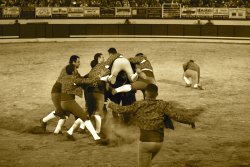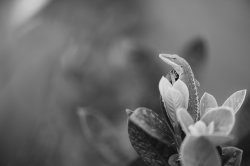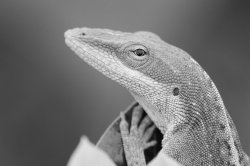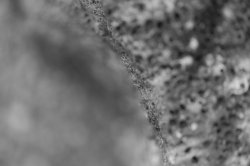What kind of advantages would a 1.8 aperture have over something like 5 besides depth of field or background blur? Is there any advantage using the 1.8 in low light settings (for example, taking a photo of a room full of people)?
Got a tip for us?
Let us know
Become a MacRumors Supporter for $50/year with no ads, ability to filter front page stories, and private forums.
A bit confused about aperture in lenses..
- Thread starter definitive
- Start date
- Sort by reaction score
You are using an out of date browser. It may not display this or other websites correctly.
You should upgrade or use an alternative browser.
You should upgrade or use an alternative browser.
Much faster speed and/or lower ISO, depending on what you're shooting with. 1.8 lets you shoot in low light without flash and at betters ISOs. Depth of field will be shallow, though, so maybe not so good for group or crowd shots.
The larger the aperture, the lower the number, the more light there is; this means that to get the correct exposure a faster shutter speed may be used, this is useful in dark conditions or where the object is moving quickly, or a lower ISO setting can be used to reduce noise.
Each step (stop) in aperture represents either a doubling or halving of the light.
1.4, 2, 2.8, 4, 5.6, 8, 11, 16, 22
So f/1.4 lets in twice as much light as f/2, f/2 twice as much as f/2.8, etc. From f/1.8 to f/5 you are looking at approximately a three stop difference so f/1.8 will let in 8x as much light as f/5.
1.4, 2, 2.8, 4, 5.6, 8, 11, 16, 22
So f/1.4 lets in twice as much light as f/2, f/2 twice as much as f/2.8, etc. From f/1.8 to f/5 you are looking at approximately a three stop difference so f/1.8 will let in 8x as much light as f/5.
Last edited:
What kind of advantages would a 1.8 aperture have over something like 5 besides depth of field or background blur? Is there any advantage using the 1.8 in low light settings (for example, taking a photo of a room full of people)?
This is a great read... (Way better than I could explain it)
https://photographylife.com/what-is-aperture-in-photography
Although everyone else has said the technical aspects of it, I see it as this: a 'fast' lens allows you to capture the shot you have in your head without worry.
You won't be taking the shot and then seeing it blurry because your maximum aperture is too low. Likewise, you won't be taking the shot and then seeing it noisy. In a nutshell, it gives you more freedom (but less cash!)
Alex
You won't be taking the shot and then seeing it blurry because your maximum aperture is too low. Likewise, you won't be taking the shot and then seeing it noisy. In a nutshell, it gives you more freedom (but less cash!)
Alex
Although everyone else has said the technical aspects of it, I see it as this: a 'fast' lens allows you to capture the shot you have in your head without worry.
You won't be taking the shot and then seeing it blurry because your maximum aperture is too low. Likewise, you won't be taking the shot and then seeing it noisy. In a nutshell, it gives you more freedom (but less cash!)
Alex
Fast? You've obviously never used the Canon 85mm f1.2. No, it's all about the light. Gimme all that light, bay-bee.
Each step (stop) in aperture represents either a doubling or halving of the light.
1.4, 2, 2.8, 4, 5.6, 8, 11, 16, 22
So f/2 lets in twice as much light as f/1.4, f/2.8 twice as much as f/2, etc. From f/1.8 to f/5 you are looking at approximately a three stop difference so f/1.8 will let in 8x as much light as f/5.
The highlighted sentence above is backwards. f/2 lets in half as much light as f/1.4, f/2.8 half as much as f/2, etc.
Great info posted above. Here's another very good read with great visuals: Exposure Guide
Another advantage assuming you're talking about a dslr, what you see through the viewfinder when composing a shot is through the lens with the aperture wide open (lowest f/ number - largest aperture). The aperture is only stopped down to the chosen setting at the time of exposure or when using a camera's preview function if there is one.
This means that the larger the maximum aperture of the lens, the brighter your view through the finder when composing.
Another advantage assuming you're talking about a dslr, what you see through the viewfinder when composing a shot is through the lens with the aperture wide open (lowest f/ number - largest aperture). The aperture is only stopped down to the chosen setting at the time of exposure or when using a camera's preview function if there is one.
This means that the larger the maximum aperture of the lens, the brighter your view through the finder when composing.
Fast? You've obviously never used the Canon 85mm f1.2. No, it's all about the light. Gimme all that light, bay-bee.
I haven't used that lens, you are right! But I can only imagine what f/1.2, with an 85mm length on a FF would do to the DOF. I bet it's razor-thin!
Alex
The highlighted sentence above is backwards. f/2 lets in half as much light as f/1.4, f/2.8 half as much as f/2, etc.
Yes, that is what I thought, too, and thanks for posting a well phrased correction.
Actually, I read that sentence with some blinking surprise.
Much faster speed and/or lower ISO, depending on what you're shooting with. 1.8 lets you shoot in low light without flash and at betters ISOs. Depth of field will be shallow, though, so maybe not so good for group or crowd shots.
This is where my confusion comes from, because to my understanding having 1.8 would produce better results under low light, but at the same time, the image would be more blurry (depth of field). This is why I couldn't understand why people were saying that such aperture is good for low light when the results wouldn't be as sharp when I was shooting with a 50mm 1.8 lens.
Thanks everyone for the info.
This is where my confusion comes from, because to my understanding having 1.8 would produce better results under low light, but at the same time, the image would be more blurry (depth of field). This is why I couldn't understand why people were saying that such aperture is good for low light when the results wouldn't be as sharp when I was shooting with a 50mm 1.8 lens.
Thanks everyone for the info.
I have a lens (well, two actually) that can go to 1.4 and they are outstanding for low light situations.
Their capacity to deal with low light - both indoors and outside (in northern Europe in winter, there is a serious lack of natural light, a lot of the time, because of short days, overcast skies, low-rising angle of the sun and so on), is why I bought them. They allow me to take shots indoors (in, say, a Gothic cathedral) - without a flash - using ambient, or natural light, at a reasonable exposure, (speed).
Yes, the depth of field can be quite narrow when you shoot wide open but if you think about how you want to compose your picture this should not be an issue.
This is where my confusion comes from, because to my understanding having 1.8 would produce better results under low light, but at the same time, the image would be more blurry (depth of field). This is why I couldn't understand why people were saying that such aperture is good for low light when the results wouldn't be as sharp when I was shooting with a 50mm 1.8 lens.
Thanks everyone for the info.
The subject(s) or object(s) you focus on will be tack sharp. Everything else will not. If you want to shoot a room full of people or objects and have them all be in focus, you have to use a smaller aperture, which means you'll have to use a flash or boost the ISO up.
I took the attached photo at a bloodless Portuguese bullfight in Stevinson, CA. It was night under awful lighting conditions. I shot it with a 50mm 1.8 lens at 2.5f at ISO 1250, on a crappy Nikon D80.
Hopefully you can see that the group of crazy men in the middle, jumping onto the bull, are in sharp focus. The crazy guy in front running to help, not so sharp. The guy in back getting to his feet, who later limped out of the arena, even less focused. The stands on the other side of the arena are even less focused.
I dislike direct flash photos and try to shoot in available light whenever possible. A "fast" lens allows me to do this. I think the Nikon 50mm 1.8 cost me less then $200.
Link to this photoshoot on Flickr.
Attachments
Last edited:
This is where my confusion comes from, because to my understanding having 1.8 would produce better results under low light, but at the same time, the image would be more blurry (depth of field). This is why I couldn't understand why people were saying that such aperture is good for low light when the results wouldn't be as sharp when I was shooting with a 50mm 1.8 lens.
It's best not to think of the the shallower Depth of Field (DoF) you get at wider apertures as simply "more blurry." Rather, wider aperture it means that the zone of acceptable sharpness in the photo will be shallower. The area of the photo that is in focus will still be sharp (assuming no camera or subject motion, etc.).
In some situations, shallower DoF is desirable in order to draw attention to the subject (e.g., portrait shots, where shallow DoF is often used to draw attention to the eyes). I cases like this, the photographer may choose a wide aperture even if there's plenty of light available (as in a studio situation with strobes).
Other times, a photographer's primary reason for using wide aperture may be that the amount of light is limited and/or a high shutter speed is desirable in order to freeze action. One example of this would be indoor sports photography. A high shutter speed is necessary to freeze sports action. But using a strobe is usually not practical and is often outright prohibited at sporting events. Therefore, a wide aperture is necessary. Higher ISO could also be used, but this compromises image quality and for some situations, high ISO alone may not yield a high enough shutter speed to freeze fast action.
Aperture and depth of field are related and a lens needs to be engineered as a system to work correctly.
When a lens is set to its smallest aperture (largest number) it lets in the least amount of light its designed to. This also generates its largest depth of field, but DOF is relative to the distance from the subject. The closer you are to the subject the shallower the DOF. Just ask anyone who shoots macro stuff of flowers and bugs. Conversely, the largest aperture (smallest number) lets in the most light but has the shallowest DOF.
If you have a DSLR, there is a Preview button on the front of the camera or on the lens itself that will stop the lens down to the aperture its set at. This lets you see the DOF that the shot will produce. Play with your camera and see how this affects things.
In regards to the f/1.2 lens thing, I used to shoot concerts in the 1960s with a 1.2 50mm on a film Nikon with Kodak Tri-X pushed to asa 800 on available light. A great lens.
Dale
When a lens is set to its smallest aperture (largest number) it lets in the least amount of light its designed to. This also generates its largest depth of field, but DOF is relative to the distance from the subject. The closer you are to the subject the shallower the DOF. Just ask anyone who shoots macro stuff of flowers and bugs. Conversely, the largest aperture (smallest number) lets in the most light but has the shallowest DOF.
If you have a DSLR, there is a Preview button on the front of the camera or on the lens itself that will stop the lens down to the aperture its set at. This lets you see the DOF that the shot will produce. Play with your camera and see how this affects things.
In regards to the f/1.2 lens thing, I used to shoot concerts in the 1960s with a 1.2 50mm on a film Nikon with Kodak Tri-X pushed to asa 800 on available light. A great lens.
Dale
I was helping a beginning photographer learn to use manual focus and control DOF (she lives thousands of miles from me, so it was by exchange of images). I used B&W so as not to let colors confuse the issue.
Here are three images that she found useful, and perhaps the OP will also. As Designer Dale pointed out, when you begin to work a close distances you realize the DOF is relative not just to aperture, but to subject distance.
Lizard, full frame
Lizard, severe crop
Rock with only the edge placed in focus
The cropped lizard shows very narrow DOF. It was shot at f/3.3, and I manually focused on its eye.
The rock was shot from above and the shot's at f/4.
I offer the rock shot because it's unusual but, I think, informative. She was surprised at how something that could have been ordinary (rock, shot from above) became something very strange and yet visually interesting, just by controlling focus (and DOF).
The lizard shows how you can use DOF over a larger area (throwing the background completely out of focus) and still produce an image in which the subject appears sharp -- until you drill down and see that really only a little of it is in sharp focus. The contrast between wholly out of focus and almost in focus gives the effect.
D810 with 105 f/2.8, tripod mounted.
Here are three images that she found useful, and perhaps the OP will also. As Designer Dale pointed out, when you begin to work a close distances you realize the DOF is relative not just to aperture, but to subject distance.
Lizard, full frame
Lizard, severe crop
Rock with only the edge placed in focus
The cropped lizard shows very narrow DOF. It was shot at f/3.3, and I manually focused on its eye.
The rock was shot from above and the shot's at f/4.
I offer the rock shot because it's unusual but, I think, informative. She was surprised at how something that could have been ordinary (rock, shot from above) became something very strange and yet visually interesting, just by controlling focus (and DOF).
The lizard shows how you can use DOF over a larger area (throwing the background completely out of focus) and still produce an image in which the subject appears sharp -- until you drill down and see that really only a little of it is in sharp focus. The contrast between wholly out of focus and almost in focus gives the effect.
D810 with 105 f/2.8, tripod mounted.
Attachments
The highlighted sentence above is backwards. f/2 lets in half as much light as f/1.4, f/2.8 half as much as f/2, etc.
You are correct. I was tired last night after all day at the office and all evening getting my gallery ready for a soft opening tomorrow.
I will go fix the OP. Thanks.
Register on MacRumors! This sidebar will go away, and you'll see fewer ads.





